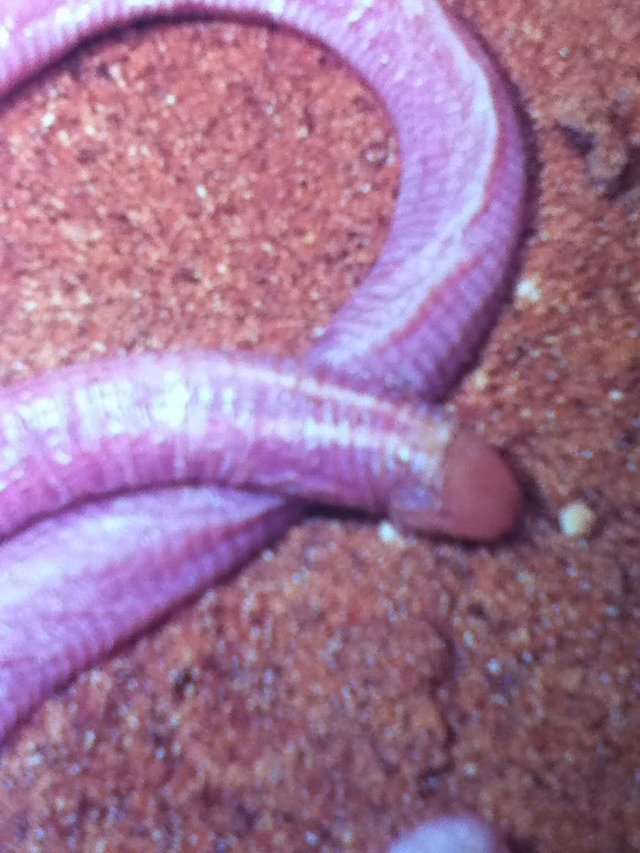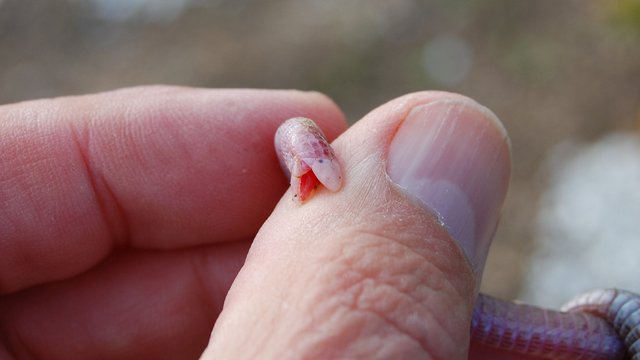Trouser snake or Worm lizard?
I'm not sure how many of you are aware these reptiles actually exist. They are not snakes but limbless lizards. They either have no limbs similar to a snake or very small limbs that help them dig through the sand. Personally i would rename them to trouser snakes for obvious reasons.
Worm lizards (Amphisbaenia), also known as amphisbaneans or ringed lizards, are a groups of squamates that include about 130 living species. Worm lizards are burrowers and are the only group of squamates to live underground for virtually their entire life. As an adaptation to their subterranean lifestyles, worm lizards have superb digging skills. They construct their own tunnels and are capable of burrowing through some pretty dense substrate.
Of the four groups of worm lizards, three have lost all traces of limbs while the fourth (the Mexican worm lizards) have stubby forelimbs. Worm lizards carve tunnels by using forceful movements of their head. Consequently, the shape and sturdiness of their skulls are suited for digging. Their head is stout in shape and either rounded or tapered with a ridge over the top. The surface of a worm lizard's head is slick so that it can be moved through the soil easily. In some species, the skull is covered with as sturdy layer of keratin. Worm lizards have eyes but they are embedded deep beneath their translucent skin. Their nostrils are shaped such that when the worm lizard digs the nostrils are forced closed so that no soil gets lodged in them. Worm lizards have no outer ears but they are still capable of hearing and of detecting vibrations in the earth. Another anatomical adaptation suited for digging is that their lower jaw closes so that it is snug within the head and remains closed tight when burrowing.
The body of worm lizards is elongated giving them a snake-like or worm-like appearance.Worm lizards move through their subterranean tunnels using concertina and rectilinear movements. Their skin is loose and folds like an accordion as the move.Worm lizards fall into one of two basic categories based on how they dig.
The shovel-snouted worm lizards dig by compressing their neck so that the rings of scales behind their head are close together. They then extend their neck and head forward into the soil and scoop their head upwards to widen the tunnel. By contrast, the keel-snouted worm lizards extend their neck and head forward in a similar manner to the shovel-snouted worm lizards but they scoop their head downwards or bend their body to widen the tunnel.Worm lizards reproduce in a similar manner to other squamates (such as snakes and lizards). Males have hemipenes and fertilization is internal. Some worm lizard species lay eggs while others retain the eggs within their body and give birth to live young. Worm lizards range in size from about 10 to 75 cm in length. Most species are dull in color (reddish brown, brown, black, and white) and some species are patterned. Worm lizards are carnivores. They feed on a variety of prey including small arthropods, worms, and small vertebrates. Although worm lizards can locate prey using their sense of smell, they are also particularly good at honing in on prey by listening for it. Worm lizards obtain water from their diet but some species also extract water from the soil. Worm lizards have powerful teeth that interlock and enable them to easily tear prey into small pieces.

(sorry for the poor quality picture, i thought it was appropriate for this post)
CLASSIFICATION
Worm lizards are squamates. There are four families of worm lizards, the Amphisbaenidae (amphisbaenids and tropical worm lizards), the Trogonophidae (Palearctic worm lizards), the Rhineuridae (North American worm lizards) and the Bipedidae (the Ajolotes or Mexican worm lizards). The most common of the worm lizard families is the Amphisbaenidae, which inhabit the Mediterranean, Africa, and North, Central and South America. The Rhineuridae include just one living member, the Florida worm-lizard.Worm lizards first appear in the fossil record about 65 million years ago during the Paleocene.

Comment and let me know what you think of these lizards.
Follow for more post on random things.
Hi! I am a robot. I just upvoted you! I found similar content that readers might be interested in:
https://www.thoughtco.com/worm-lizards-130888